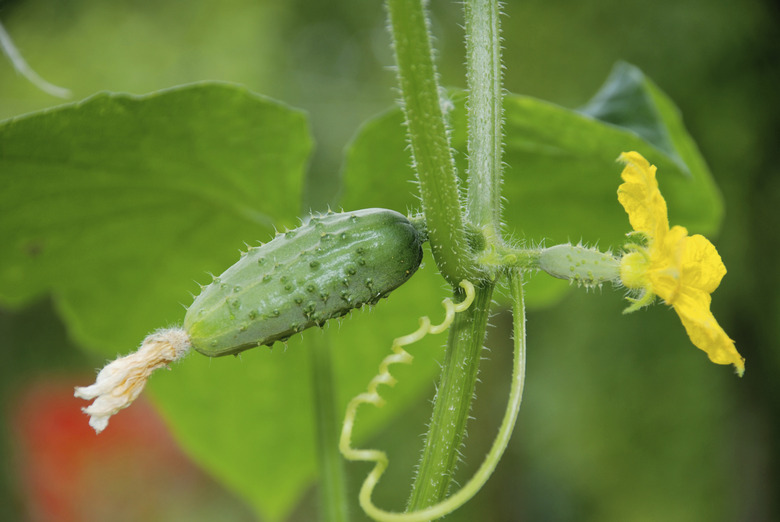My Cucumbers Are Turning Yellow On The Vine
We may receive a commission on purchases made from links.
Yellow cucumbers can be a good thing, or they could be a sign that something is seriously wrong with your plant. When you notice the cucumbers you are growing are yellowing, the first step is identifying the cause, whether it turns out you are actually growing a yellow cultivar, overwatering, failing to fertilize, dealing with a virus outbreak, or another issue. Once you know what the problem is (if there is one at all), you can figure out how to fix the issue.
Are yellow cucumbers normal?
Are yellow cucumbers normal?
Although most cucumbers are dark green, yellow varieties do exist. The 'Lemon' cultivar is a good example. Like all cucumbers, it grows as an annual in all parts of the United States. It differs from other cucumber varieties in that it produces ball-shaped, 4-inch-wide cucumbers in bright yellow. Whether you start cucumber plants from seed or purchase seedlings at a nursery, check the label and know what you're growing. It's possible your cucumbers were always destined to turn yellow.
What can cause yellow cucumbers?
Food and Water
Improper watering and fertilizing can both result in yellow cucumbers. Cukes have shallow roots that crave moisture, but leaving them with wet feet can make them turn yellow. Cucumber plants do best when watered once weekly during dry spells, or whenever the top inch of soil feels dry to the touch. A particularly rainy growing season may lead to a disappointing crop.
Adequate nutrition also helps ensure healthy green cucumbers. A lack of nutrients can cause yellowing of both the leaves and cucumbers, which may stay small rather than reach their full size. The best way to determine nutrient needs is to perform a soil test. But in the absence of a test, mix 1 cup of a 10-10-10 granular fertilizer into each 10-foot row at planting time. When the young vines reach 1 foot in length, mix 1 tablespoon of fertilizer into the soil beside each plant.
Cucumbers left on the vine too long will also turn yellow and orange as they start to fade. They may also become overly large. While you certainly won't enjoy eating these bitter vegetables, leaving them on the vine slows or stops the production of new cucumbers. It's best to remove and discard them.
Cucumber Mosaic Virus
Mosaics are often attractive works of art, but this is not so when it comes to the cucumber mosaic virus. This disease is incurable and caused by an organism that creates a yellow, mottled appearance on the cucumber plant's leaves. It also causes small, stunted cucumbers with yellow or white mottling. Remove and destroy any plants that show signs of this virus and keep a close eye on any remaining cucumbers in your garden.
Aphids and cucumber beetles spread the cucumber mosaic virus, so controlling them is important. Early in the season, cover the plants with floating row covers. You'll need to remove the covers by early summer to allow pollination, but they will offer young plants protection early in the growing season. For pest control, after you uncover the plants, spray them with a ready-to-use insecticidal soap, following all label directions. Spray on a still, windless day and repeat every two weeks as needed.
Other Cucumber Crises
While the cucumber mosaic virus is the biggie, several other issues can cause yellow, wilted plant leaves and small cucumbers with an orange or yellow color. These include bacterial wilt and fungal problems. Striped cucumber beetles spread bacterial wilt and are best controlled with the same floating row covers used to discourage aphids. Later in the season, handpick the beetles off the plants when you see them. This is a much safer alternative than pesticides since you'll want to know your cucumbers are chemical-free and safe to eat.
Fungal disorders are best controlled by keeping air flowing through your crop. Space your plants eight to 15 inches apart and avoid wetting the foliage when watering. Growing plants on trellises also improves air circulation while keeping cucumbers up and off of moist soil.
If you do experience disease problems, choose disease-resistant cultivars next year and try again, 'Marketmore 76' and 'Fanfare' are two excellent options. Rotate your planting location every three years, as well. Cucumber beetles can overwinter in your garden soil and easily find (and infect) your cucumbers again if you plant them in the same location.
